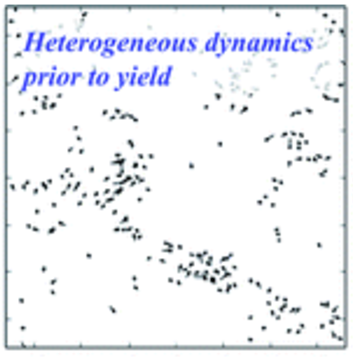Abstract
The origins of molecular mobility in polymer glasses, particularly under deformation, are not well understood. A concerted experimental and computational approach is adopted to examine the segmental motion of a polymeric glass undergoing creep and constant strain rate deformations. Through a combination of molecular dynamics simulations and optical photobleaching experiments we are able to directly probe how dynamic heterogeneity evolves during deformation. Two distinct regimes emerge from our analysis; early in the deformation, the dynamics of the glass are strongly heterogeneous, as evidenced by the spectrum of relaxation times measured experimentally and the participation ratio of the atomic non-affine displacements measured computationally. After the onset of flow, the dynamics become significantly more homogeneous, and the participation ratio increases considerably.
